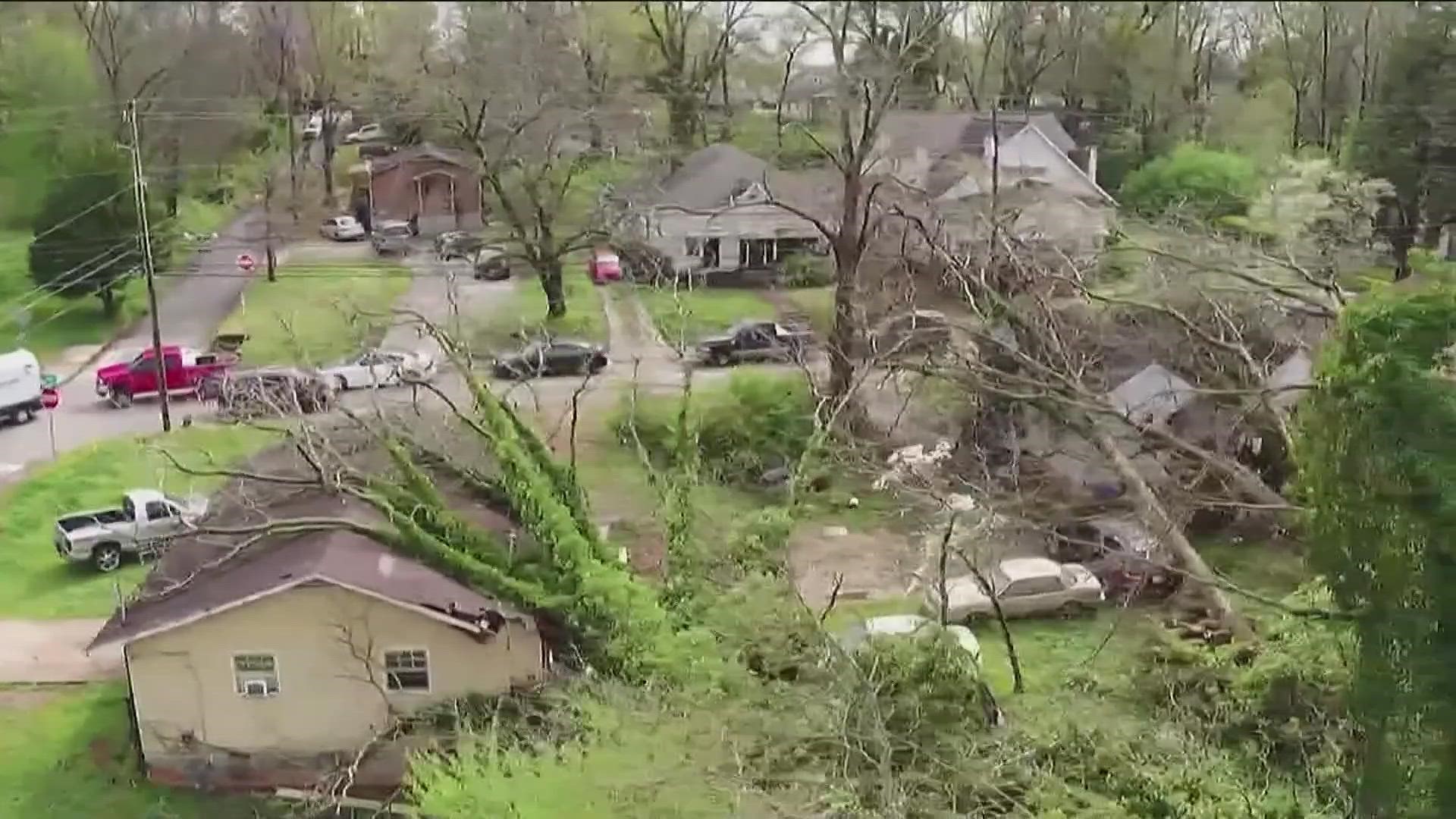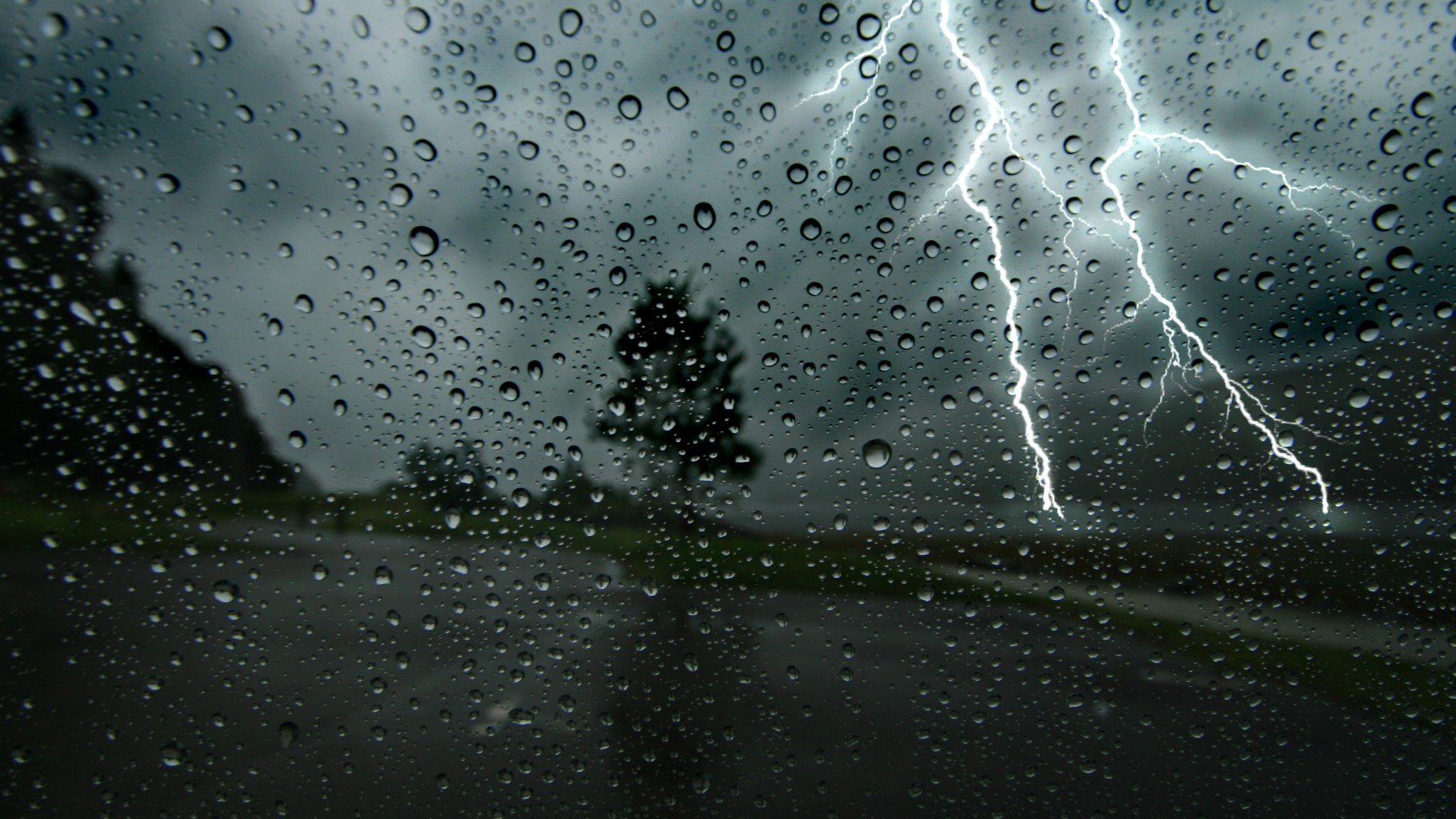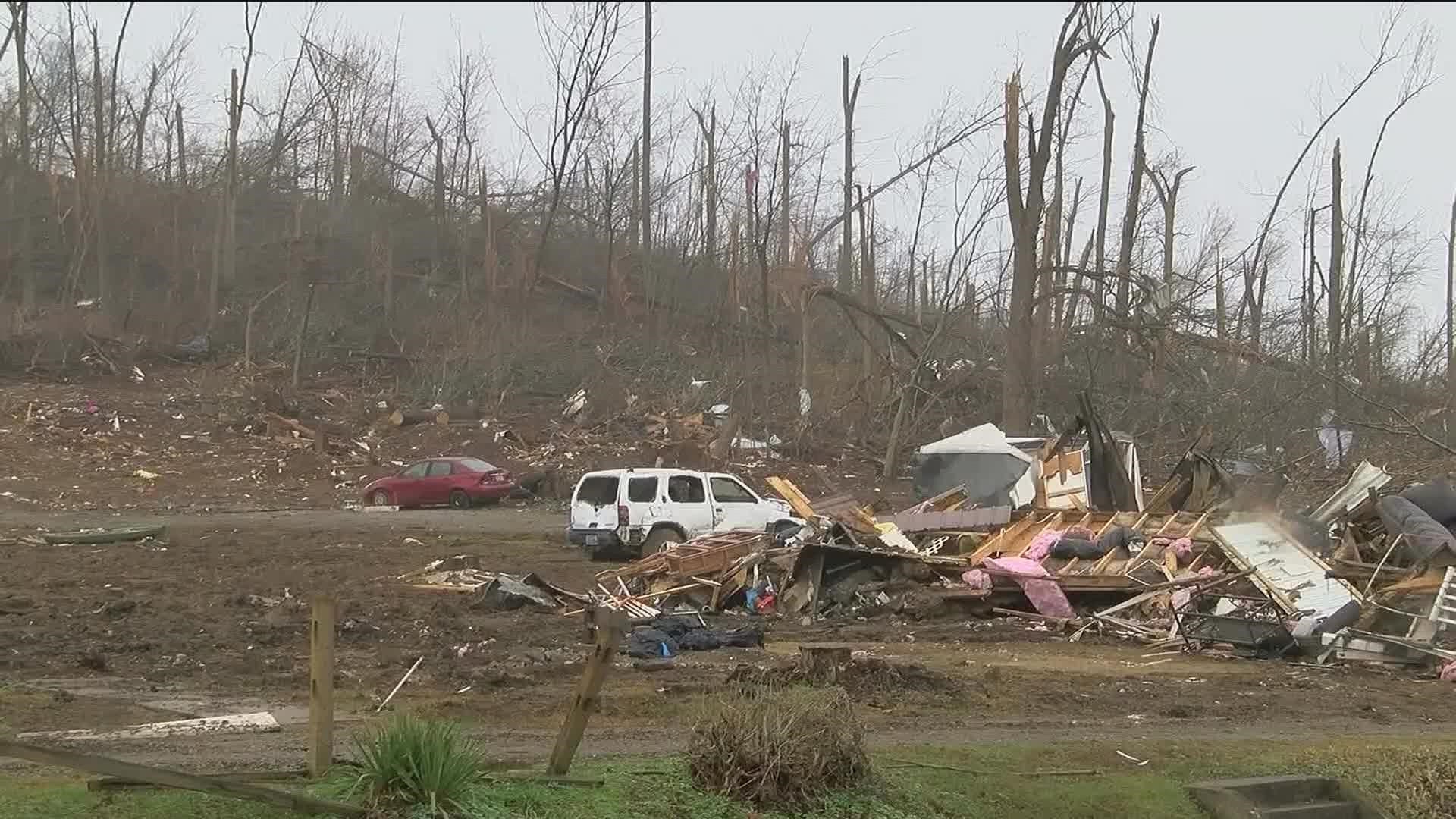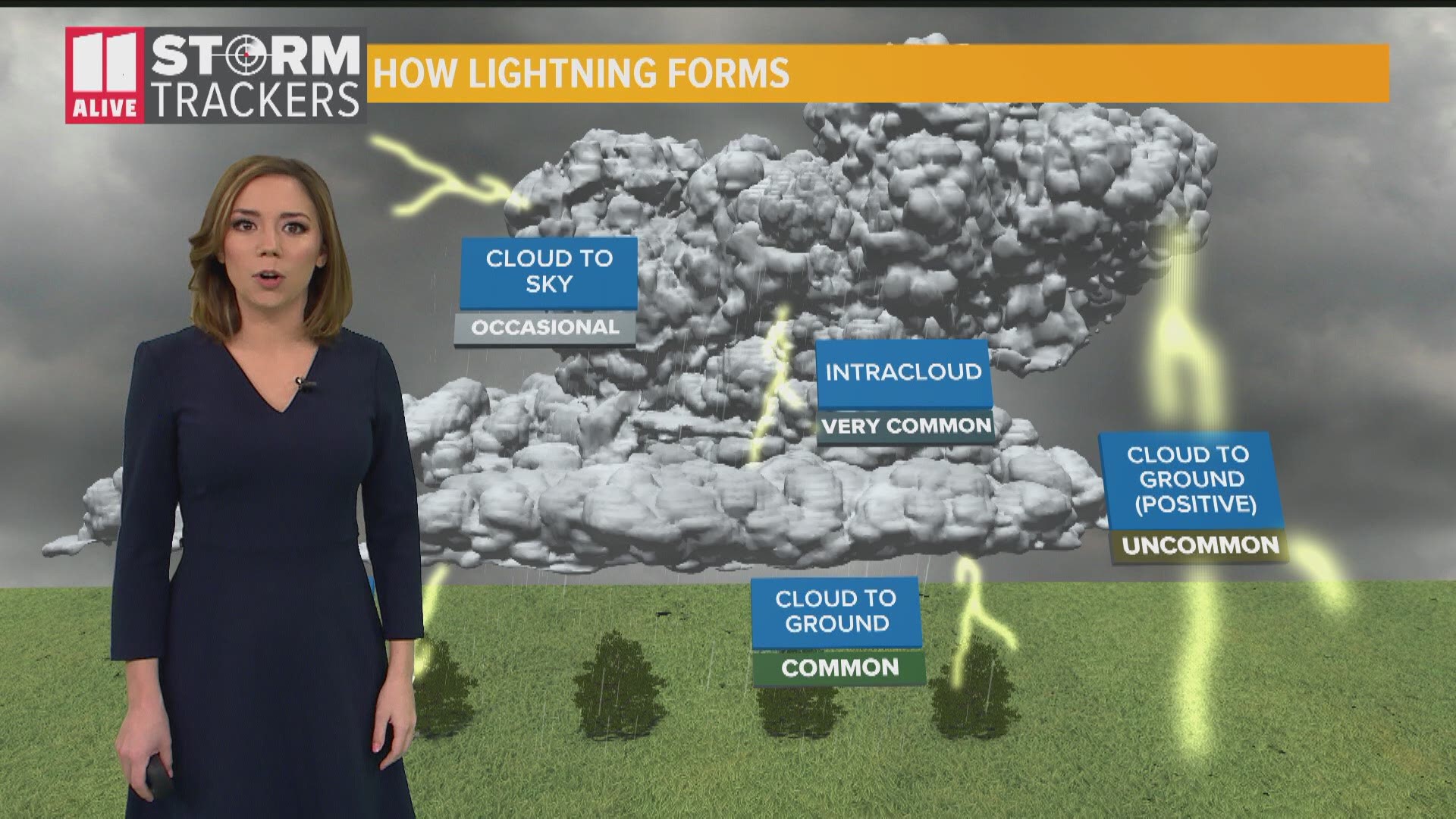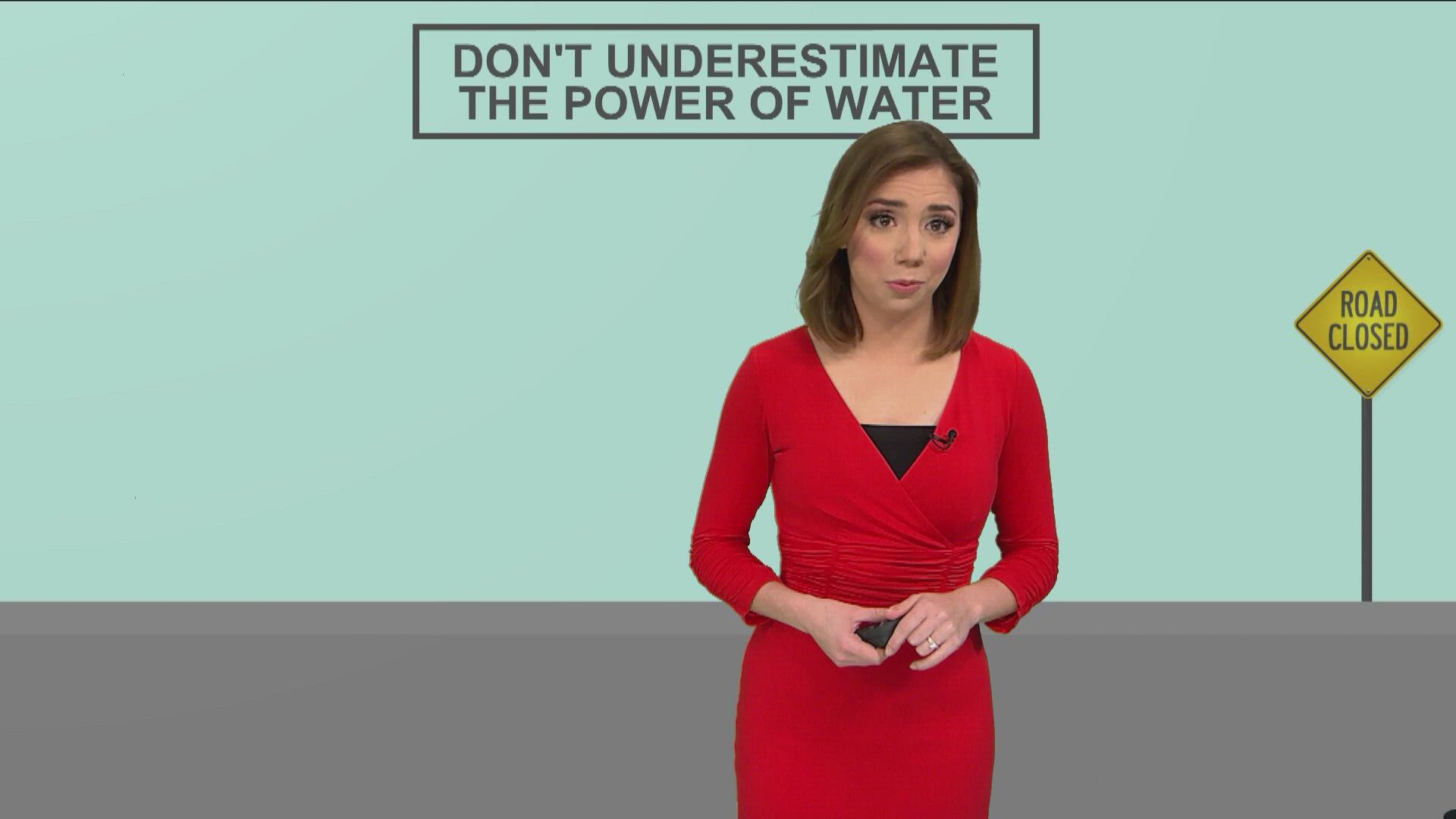ATLANTA — February 6-10 is Severe Weather Preparedness Week and each day has its own theme.
Monday | Family Preparedness
For Monday, we recognized family preparedness, which includes having ways to receive alerts and making sure you know what to do when you get those alerts.
Of course, it is always important to pay attention to what the forecast is, but it is also important to have a way to receive alerts.
Families can have NOAA Weather Radios in their homes that go off when severe weather threatens their area. Alerts also go off on local news channels, including here at 11Alive.
You should also turn on "Wireless Emergency Alerts" on your phone. These new alerts can trigger your phone's alarm when a tornado warning or flash flood emergency is issued for your location. Finally, you can have other apps on your phone that keep you informed on severe storms.
The 11Alive App is one of those apps that can keep you informed and send weather alerts to your phone.

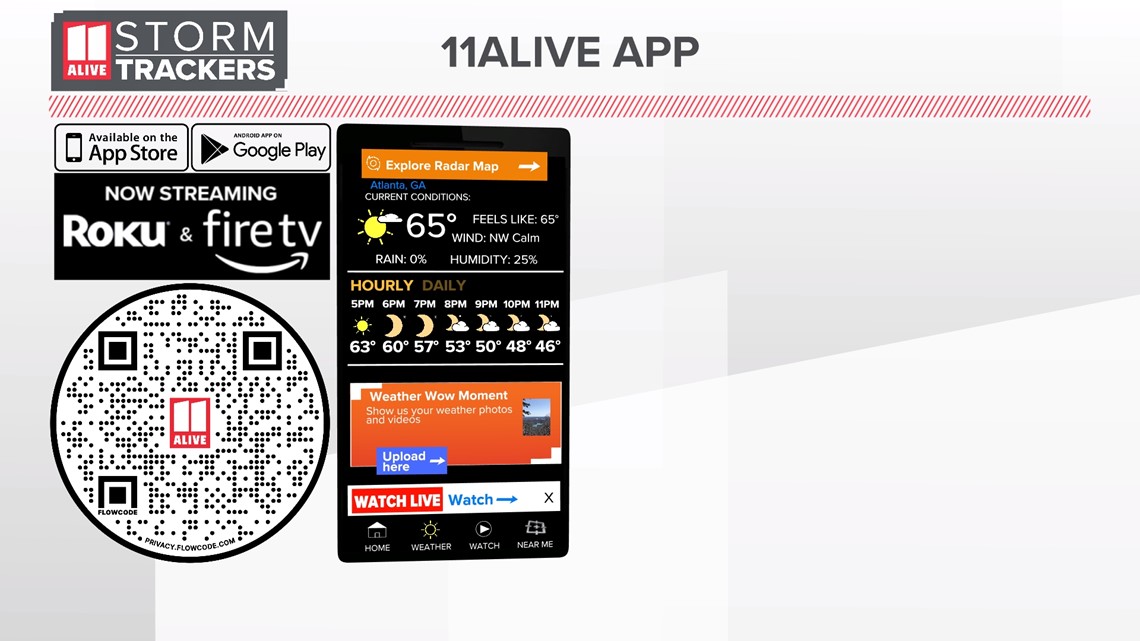
Once you get an alert, you should know where to go for safety. During a tornado warning, you should always go to the most interior room of your home. Put as many walls between you and the outside and stay in the lowest level possible It is also a good idea to wear a helmet in your safe spot, to protect your head from any debris.

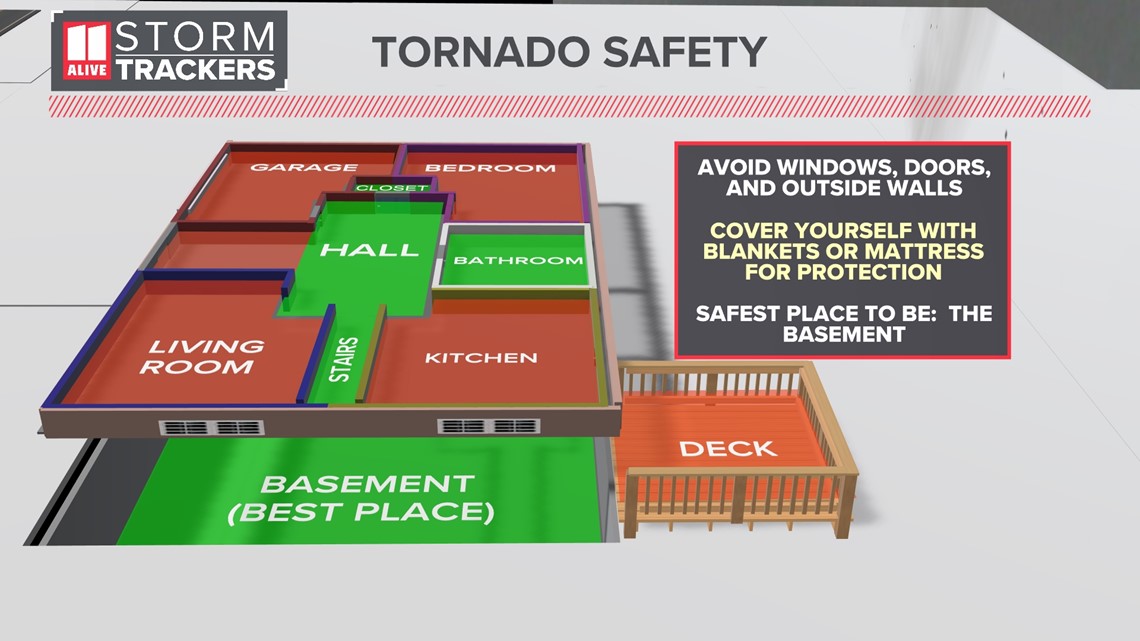
Tuesday | Thunderstorm Safety
For Tuesday, we recognize thunderstorm safety.
First of all, it is important to understand the difference between a watch and a warning.
A watch indicates a risk of hazardous weather and you should have a plan in place in case it happens.
A warning indicates the event is either occurring, imminent or likely. You should take action immediately to protect yourself and your property.

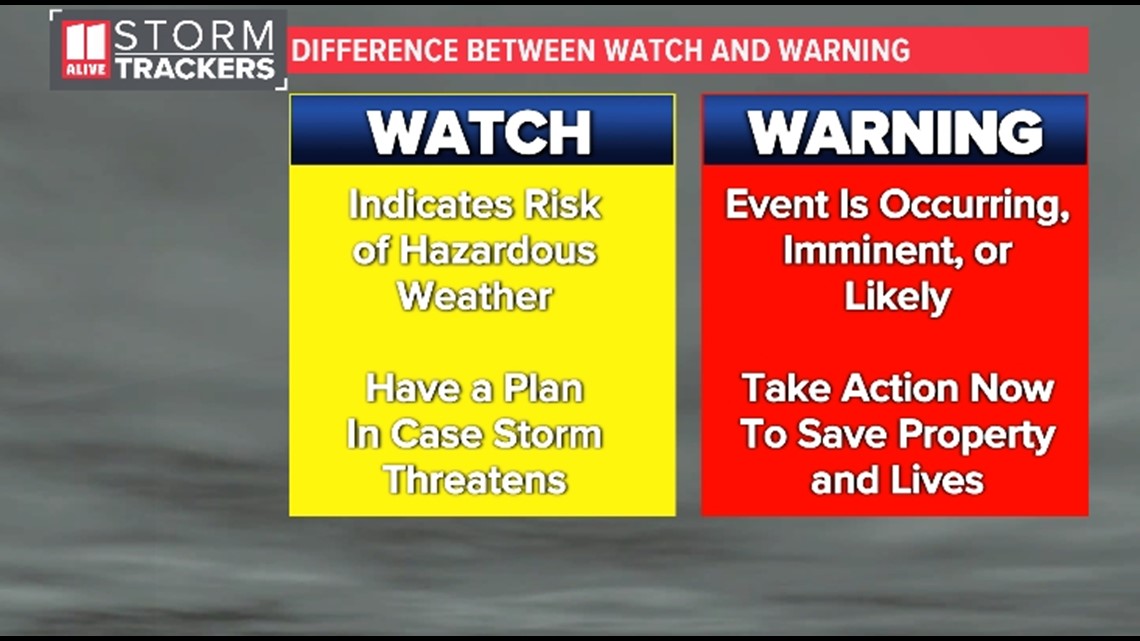
We see our fair share of storms in Georgia in the spring and summer months. But even outside these seasons, we can have storms year-round in Georgia. Even non-severe storms can be dangerous, containing lightning, gusty winds, and small hail.
A Severe Thunderstorm is a storm with any or all of the following conditions: wind gusts of 58 miles per hour or greater or one inch diameter hail or greater. Severe thunderstorms can cause just as much damage as some tornadoes, and this damage can cover a larger area than tornadoes.
Severe storms with 70 mph wind, or golf ball size hail may be tagged with "considerable" severe thunderstorm warnings.
Finally, severe storms with 80+ mph wind, or baseball size hail may be tagged with "destructive" severe thunderstorm warnings.

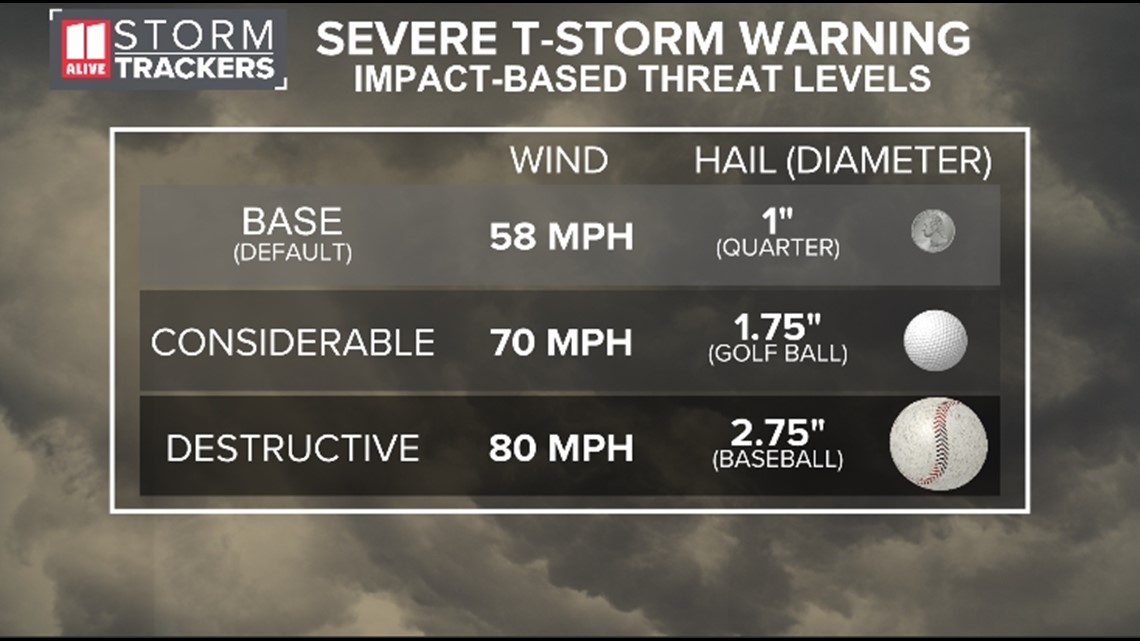
Leading up to possible severe weather events, the Storm Prediction Center will release maps that show areas that could be threatened by severe weather. Their categories are rated from Marginal to High (Level one to five).

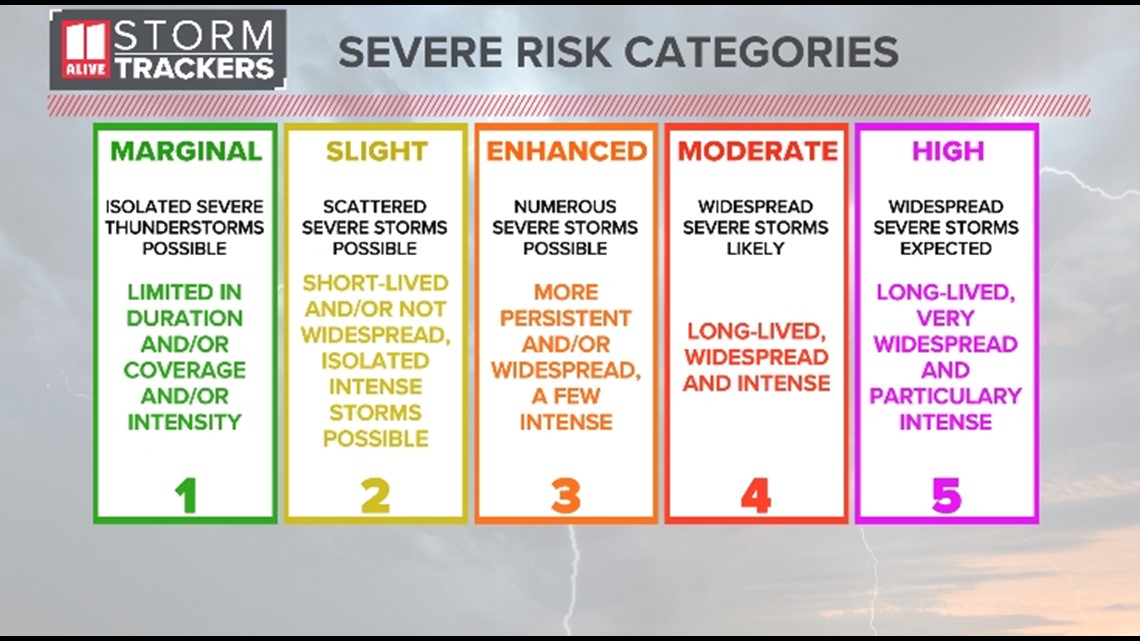
A Marginal Risk, or level one, means isolated severe storms are possible.

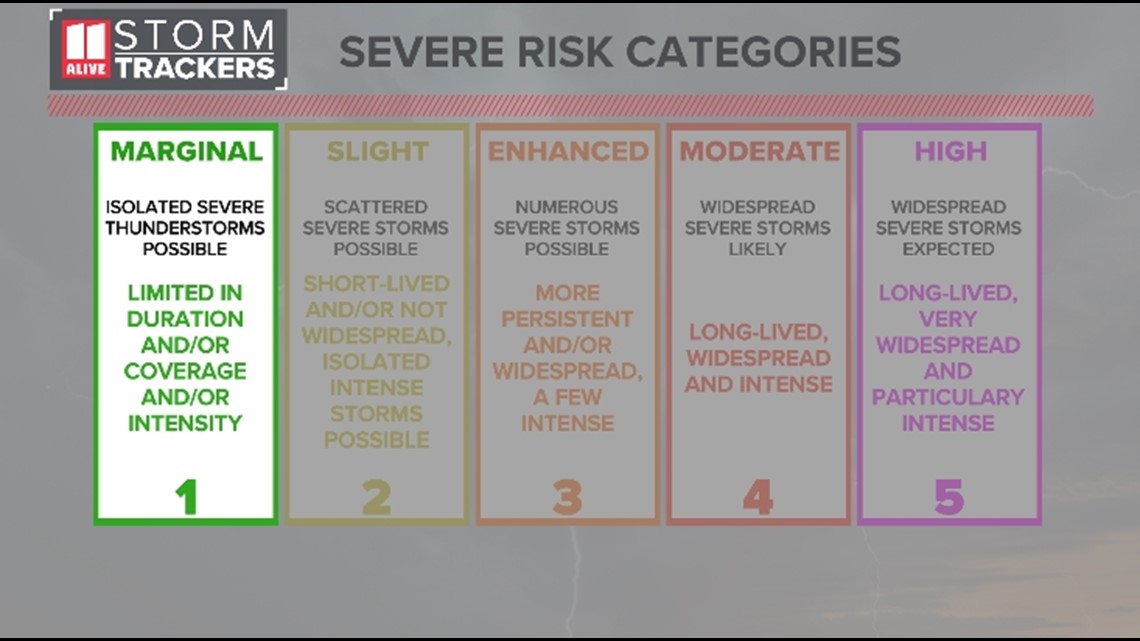
A Slight Risk, or level two, indicates storms may become more scattered with a few more strong storms possible.

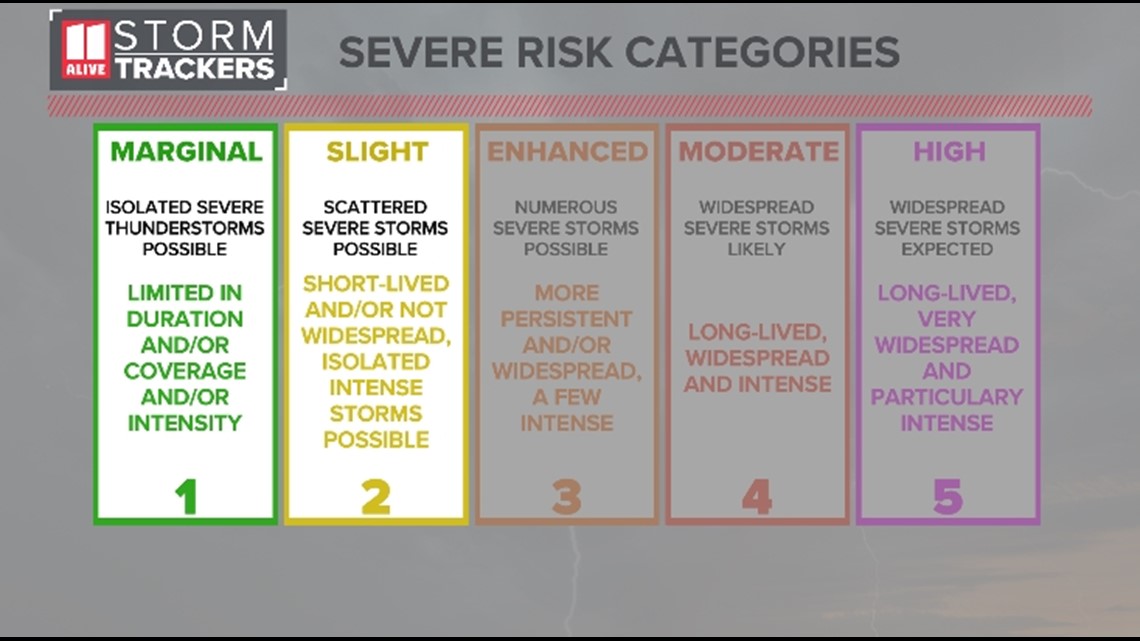
An Enhanced Risk, or a level three, indicates even more severe storms could be possible.

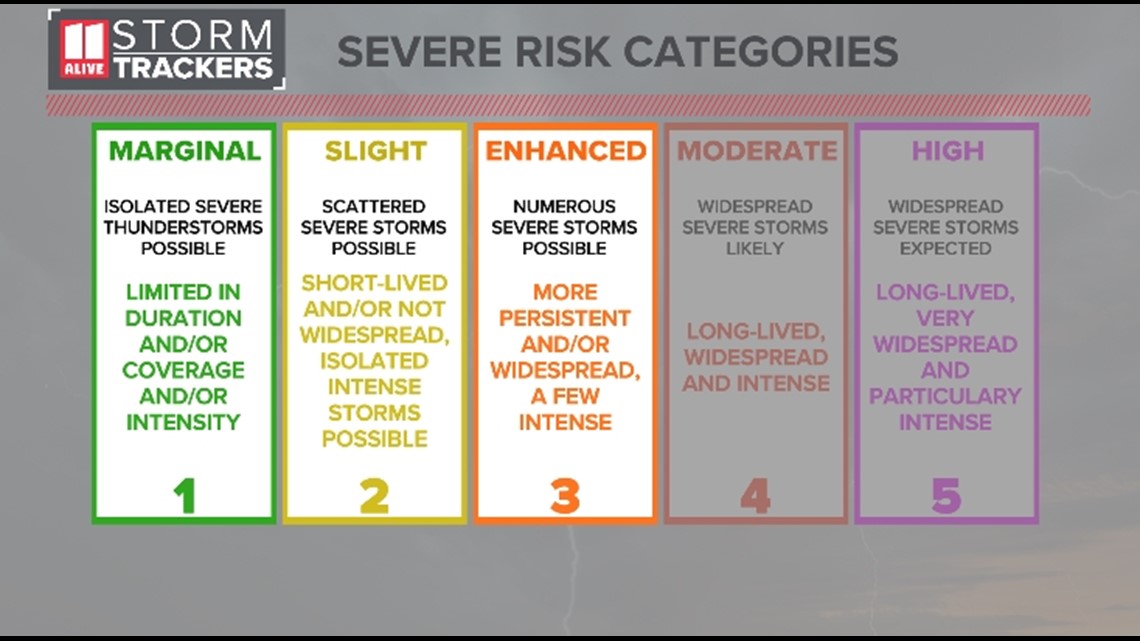
A Moderate Risk, or a level four, indicates severe storms are likely and widespread impacts will be possible.


Although it is very rare to see these issued, a High Risk, or a level five, indicates widespread severe storms are expected with widespread damage from long-lived severe storms.

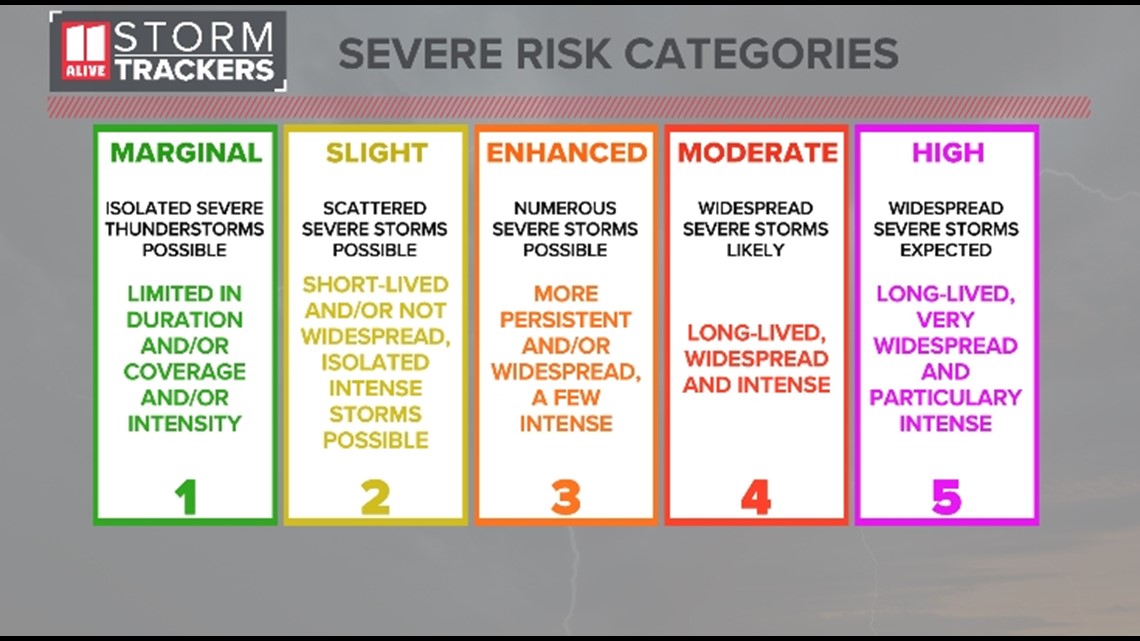
Wednesday - Tornado Safety
Tornadoes are rapidly-rotating columns of air that form from a rotating thunderstorm. Our peak tornado season across north Georgia is in the months of March, April and May. Tornadoes can happen any time of year, not just in the spring.
Tornado strength is estimated based on the damage incurred by using the Enhanced Fujita Scale, or EF-scale. From EF-0 tornadoes with winds between 65 and 85 miles per hour to EF-5 tornadoes with winds in excess of 200 miles per hour, the damage from tornadoes can vary widely. This is why you need to always be prepared to take shelter in a secure place when a tornado warning is issued.
A tornado warning means that a tornado is imminent, likely or already occurring. This can be based on ground observations or based on radar data.
RELATED: Be prepared | Tornado safety tips
When sheltering from a tornado, remember to "duck and cover." Get down to the lowest level of your house and in an interior room, closet or hallway. The basement is best. Cover your head and neck. You can use a helmet, blankets, pillows, or a mattress to also give yourself protection.
There will be a statewide tornado drill at 9 a.m. Wednesday.
Thursday - Lightning Safety
A thunderstorm does not have to be severe to pose serious risks. Lightning is a very good example of this. Lightning is hotter than the surface of the sun and can be dangerous and sometimes deadly. Sadly, we lose Americans to lightning strikes every year. Roughly 80% of lightning fatalities are males, while 20% of lightning victims are female. The top activities during these lightning deaths are fishing, the beach, and camping.
Lightning is like a static electricity shock on really bad steroids. You've heard the saying "opposites attract," right? In lightning formation, negatively charged particles at the bottom of the storm are attracted to positively charged particles on the ground. When this difference in charge gets great enough, a flow of negative charge from the cloud flows to the earth in a "stepped ladder." The return stroke is what we see - a big lightning bolt.
Thunder happens due to the the rapid heating of the air, which creates a shock wave through the atmosphere. You can't have thunder without lightning.
Remember, "when thunder roars, go indoors." Whenever you hear thunder, you are close enough to be struck by lightning.
Friday - Flood Safety
Flooding is the No. 2 weather-related killer in the United States each year behind heat.
Water is powerful. It only takes six inches of swiftly moving water to knock you off your feet. One foot of moving water can float a small car, while two feet of moving water can float a larger truck or SUV.
If you ever come across a flooded roadway, remember "turn Around, don't drown." You don't know how deep the water is. You don't know how quickly the water is moving. You don't know what's in the water -- including downed live wires.
And you don't know what the integrity of the road is underneath the water.

